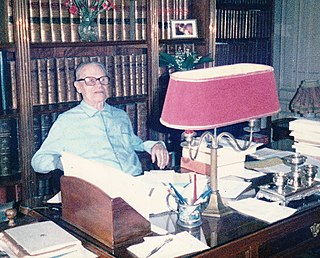
The Bastille was a fortress in Paris, known as the Bastille Saint-Antoine. It played an important role in the internal conflicts of France and for most of its history was used as a state prison by the kings of France. It was stormed by a crowd on 14 July 1789, in the French Revolution, becoming an important symbol for the French Republican movement. It was later demolished and replaced by the Place de la Bastille.

François Victor Alphonse Aulard was the first professional French historian of the French Revolution and of Napoleon. His major achievement was to institutionalise and professionalise the practice of history in France. He argued:

The Mountain was a political group during the French Revolution. Its members, called the Montagnards, sat on the highest benches in the National Convention. The term, first used during a session of the Legislative Assembly, came into general use in 1793. By the summer of 1793, that pair of opposed minority groups divided the National Convention. That year, the Montagnards were influential in what is commonly known as the Reign of Terror.

Numa Denis Fustel de Coulanges was a French historian. Joseph M. McCarthy argues that his first great book, The Ancient City (1864), was based on his in-depth knowledge of the primary Greek and Latin texts. The book argued that:

The historiography of the French Revolution stretches back over two hundred years.
Albert Marius Soboul was a historian of the French Revolutionary and Napoleonic periods. A professor at the Sorbonne, he was chair of the History of the French Revolution and author of numerous influential works of history and historical interpretation. In his lifetime, he was internationally recognized as the foremost French authority on the Revolutionary era.

The War in the Vendée was a counter-revolution from 1793 to 1796 in the Vendée region of France during the French Revolution. The Vendée is a coastal region, located immediately south of the river Loire in western France. Initially, the revolt was similar to the 14th-century Jacquerie peasant uprising, but the Vendée quickly became counter-revolutionary and Royalist. The revolt headed by the newly formed Catholic and Royal Army was comparable to the Chouannerie, which took place in the area north of the Loire.

The Société Mathématique de France (SMF) is the main professional society of French mathematicians.

Marc Ferro was a French historian.
The Groupement de Recherche et d'Études pour la Civilisation Européenne, better known as GRECE, is a French ethnonationalist think tank founded in 1968 to promote the ideas of the Nouvelle Droite. GRECE founding member Alain de Benoist has been described as its leader and "most authoritative spokesman". Prominent former members include Guillaume Faye and Jean-Yves Le Gallou.

The Lycée Charlemagne is located in the Marais quarter of the 4th arrondissement of Paris, the capital city of France.

Camille-Ernest Labrousse was a French historian specializing in social and economic history.
The longue durée is the French Annales School approach to the study of history. It gives priority to long-term historical structures over what François Simiand called histoire événementielle. It concentrates instead on all-but-permanent or slowly evolving structures, and replaces elite biographies with the broader syntheses of prosopography. The crux of the idea is to examine extended periods of time and draw conclusions from historical trends and patterns.

The Musée de la Révolution française is a departmental museum in the French town of Vizille, 15 kilometres (9.3 mi) south of Grenoble on the Route Napoléon. It is the only museum in the world dedicated to the French Revolution.
The term new history, from the French term nouvelle histoire, was coined by Jacques Le Goff and Pierre Nora, leaders of the third generation of the Annales school, in the 1970s. The movement can be associated with cultural history, history of representations, and histoire des mentalités. The new history movement's inclusive definition of the proper matter of historical study has also given it the label total history. The movement was contrasted with the traditional ways of writing history which focused on politics and "great men". The new history rejected any insistence on composing historical narrative; an over-emphasis on administrative documents as basic source materials; concern with individuals' motivations and intentions as explanatory factors for historical events; and the old belief in objectivity.
Jacques Léon Godechot was a French historian of the French Revolution and a pioneer of Atlantic history. He was the Dean of the Faculty of Letters and human sciences at the University of Toulouse from 1961 to 1971.

The Coup d'état of 9 Thermidor or the Fall of Maximilien Robespierre is the series of events beginning with Maximilien Robespierre's address to the National Convention on 8 Thermidor Year II, his arrest the next day, and his execution on 10 Thermidor. In the speech of 8 Thermidor, Robespierre spoke of the existence of internal enemies, conspirators, and calumniators, within the Convention and the governing Committees. He refused to name them, which alarmed the deputies who feared Robespierre was preparing another purge of the Convention, similar to previous ones during the Reign of Terror.
This page is based on this
Wikipedia article Text is available under the
CC BY-SA 4.0 license; additional terms may apply.
Images, videos and audio are available under their respective licenses.












